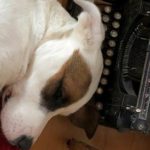 You’ve logged the miles and now it’s time to write the journey.
You’ve logged the miles and now it’s time to write the journey.
Writing a memoir is your opportunity to share a transformational story or collection of stories from your life’s journey. You’ve logged the miles, and, along the way, you’ve faced challenges, taken risks, failed, given up, risked again; until, finally, you emerged transformed in some way. You’ve reached a crest where you can see 365 degrees around you, and you pick out the faint trail of your passage all the way back to your beginning. You know you have a story to share with others. Where do you begin?
Begin at the end
Begin at the end of your story. Really. Not kidding. Your story may be one of struggle, facing and ultimately overcoming adversity. Think Wild: From Lost to Found on the Pacific Crest Trail. Author Cheryl Strayed structures her narrative on her actual journey, over a contained period of time, with a clear story arc based on her transformative experience. At the same time, she is writing about her journey to come home to herself after years of dangerous, addictive choices. Her story is one of transformation, step by step, mile by mile, challenge by daunting challenge.
If your memoir is about overcoming adversity, then you, too, are telling a story of transformation. The main character (in a memoir that’s you) faces a dilemma and views her world differently at the end of the story than she did at the beginning. Your reader, too, must experience this journey of transformation from beginning, to middle, to end.
Picture your transformation
Think about powerful last images of books and films you love and how they capture an essence of the story. Now imagine yourself at the end of your story. Take a snapshot in time. Pick an image that captures something essential about you at the end of your story. Where are you? Who are you with? Or are you alone? How are you standing, sitting, dancing? How are you relating to others? Pick out any details that come to you.
Want to get writing right now? Grab your paper and pen and write for 5 minutes. You can use this method to answer all the questions in this post. Easy hint: You’re not writing your story, you are playing with ideas so stay loose, write quickly, do not erase or censor, have fun.
Now circle back to the beginning
Now imagine yourself at the beginning of your story. Take a new snapshot in time. Again, pick an image that captures something essential about you at the beginning of your story. Where are you? What are you doing? Who are you with? What are you seeking?
Before and after
Finally, hold those images side by side in your mind. How have you changed from the beginning to the end? How are you relating differently to others? How has your view of the world shifted? Something inside you has changed profoundly. You have undergone a transformation. You’ve let something go and you gained something new. In story terms, you’ve sacrificed and you’ve earned a gift.
When your memoir is not about overcoming adversity
No excruciating problem? No problem! Your memoir may be based on your adventures, your experiences, and organized thematically. Novelist and memoirist, Roz Morris, author of Not Quite Lost: Travels Without A Sense of Direction, was inspired by an old, leather bound diary, a “visitor’s book” that she carried with her on her travels and used to record unique encounters and interesting experiences, moments otherwise lost. She selected her most “tellable” stories and then looked more carefully for connecting themes to create Not Quite Lost. Roz Morris, also a respected writing teacher and mentor, encourages writers to clarify the primary theme of their memoir and/or chapters by finishing the statement: This is the story of how I did (fill in the blank). Note: Keep a journal or file of stories that don’t fit your statement because they may well find their way into other books you write.
Borrow, build, restructure
Wise writers do not reinvent the wheel. Who has time? When it comes to structuring your narrative, be imaginative, and also recycle. You can use markers on a map, musical scales, ingredients in your favorite recipe, the Ten Commandments. Lists may make great story markers: the list of Einstein’s Demands (to his wife Mileva); Galileo’s Shopping List; Santa’s List; your grocery list; a list of country-western song titles–you get the idea. Take a look at Charles Dickens and his chapter headings. In one of my novels, I divided sections by using the circles of hell from Dante Alighieri’s The Inferno. Dickens and Dante can be models for memoir, too.
‘Find your why’ and stay on course
A writer recently shared some great advice from a conference speaker talking about memoir. Her directive: Find your why, it doesn’t matter what it is, but find it! Why are you passionate about telling your story and sharing it with readers? Write down your “Why” on a sticky note and tack it to your computer or somewhere visible on your desk. When doubts arise and your spirits flag, use your passion to re-inspire and re-energize yourself.
Writing a memoir is not writing your journal
Although writers often use journals to record material, thoughts, notes, your memoir is not your journal. A journal is meant to be sequential, a collection of images, stories, moments, an exploration of history, memory, and the unconscious, a catharsis. A journal needs no ending, no structure, your memoir does.
Writing a memoir is not writing your autobiography
A memoir is not an autobiography. An autobiography aims to cover the span of your life. A memoir is the story covering a slice of your life–a life slice meaningful to you and to others. A memoir is not a biography. If someone wants to write a book that details your life, you are already famous.






Just woke up, Good morning! 7am here in NJ and my characters are on my mind. ( Thank you Sarah for all you have offered here on your blog. I have been reading and learning ) Anyone reading this, will you join me in a little test ? a test to self that is. I have three character names addressed to a grown middle aged man. I will list the names and ask you kindly to give each character name a personality. Will you please ? I can use anybodies insight. All I need is two, there or more one word descriptions. For example if i said ” Karen” you might say, “reserved, cautious, and studious ” SO, here are the names … Roy – Hank – Benjamin – Thanks to anyone who finds this something of interest and if you need to talk about your book with another student writer, “me” i am here . Best of wishes to you:)
Student Writer-New Jersey
Hi Amber, interesting challenge. Roy makes me think of the west, probably because of Roy Rogers. Hank…from Henry so a man who chooses the less formal, basic masculine name. And Benjamin, more east coast. All names I like. Glad the blog is helpful!
Thank you Sarah, Being at the beginning of my book , i feel, for me, i need the names chosen.
The reason why is that as i write, i want to go back in time and feel the moment, the time, and the event. “Hank” as of right now, is a definite choice but for the man that was manipulative, dangerous, and abusive. Sorry ! to all the Hanks out there 🙂